Many of us are learning new skills and reconnecting with the world around us during this time. So whilst we’re dreaming of future trips traversing the planet and exploring the wilderness under a blanket of stars, our team is learning more about stargazing right here from our gardens. And because we can’t stop planning trips, our travel gurus have collated our top five stargazing experiences to add to your bucket list.
Getting to know the cosmos is the perfect isolation activity for all ages – and offers some variety as we enter another month of homeschooling! There’s no need to start ordering technical equipment if you’re looking to get started with stargazing from home, as it’s possible to see a galaxy up to two and a half million light-years away with your unaided eyes. Ideally, find a dark spot with as little light pollution as possible, and your eyes will take around 15 minutes to adjust to the darkness. The old set of binoculars that you might have hanging around at the back of a drawer are enough to fuel an amateur astronomer session, with a wide field of view and no confusing image flipping that you’ll find with a telescope. Now, the experts say, it’s all about getting familiar with the sky. Astronomy apps such as Stellarium are a great tool to start exploring the constellations above you, getting your bearings with the ‘landmarks’ of planets and the moon, or the Night Sky App will even identify constellations by simply pointing your phone at the sky (and don’t forget to use the night view option).
Whether or not you’re on your way to becoming the next Galileo during this time, we wouldn’t be the travel experts without injecting some wanderlust inspiration for your future stargazing sessions. So we have highlighted some of the most remote locations that our team have travelled to, with stargazing experiences that stuck in their memories.
If I had a penny for every time someone posed me the question, “Where is the best place to see the Northern Lights?” Well… I’d have a lovely winter escape high in the Arctic with my own pack of huskies and a lifetime supply of cinnamon buns in my freezer. I have been incredibly lucky to have seen the Northern Lights between three countries, but one experience stands out. The experience stands out because of something other than the glorious blues and greens stretching across the horizon. I was standing directly under the Milky Way, sparkling and glowing between thousands of stars, with enough of them shooting over my head that I ran out of wishes. Prior to this moment, the closest that I had come to having an interest in space was when that robot took a selfie on Mars, but as my guide pointed out flickering stars and explained the light that we were seeing is from something that will have died many moons ago, I was speechless. A penny dropped, and overnight I became someone who stays up to watch solar eclipses and Elon Musk’s satellites.
I was staying at Storfjord Hotel, which proudly sits in one of Norway’s most beautiful section of fjords, far from both the bright lights of the city and the rain-prone coastline. One of National Geographic’s Unique Lodges of the World, this is an incredibly special place to stay on any night of the year, and on a clear night, the sky above brags some of the best stars gazing opportunity for miles. Visit in Autumn for stunning hikes during the day and the possibility of Northern Lights, but best of all – the constellations and astronomy of the stars of a silent Norwegian night.

From Molly
Head of Europe
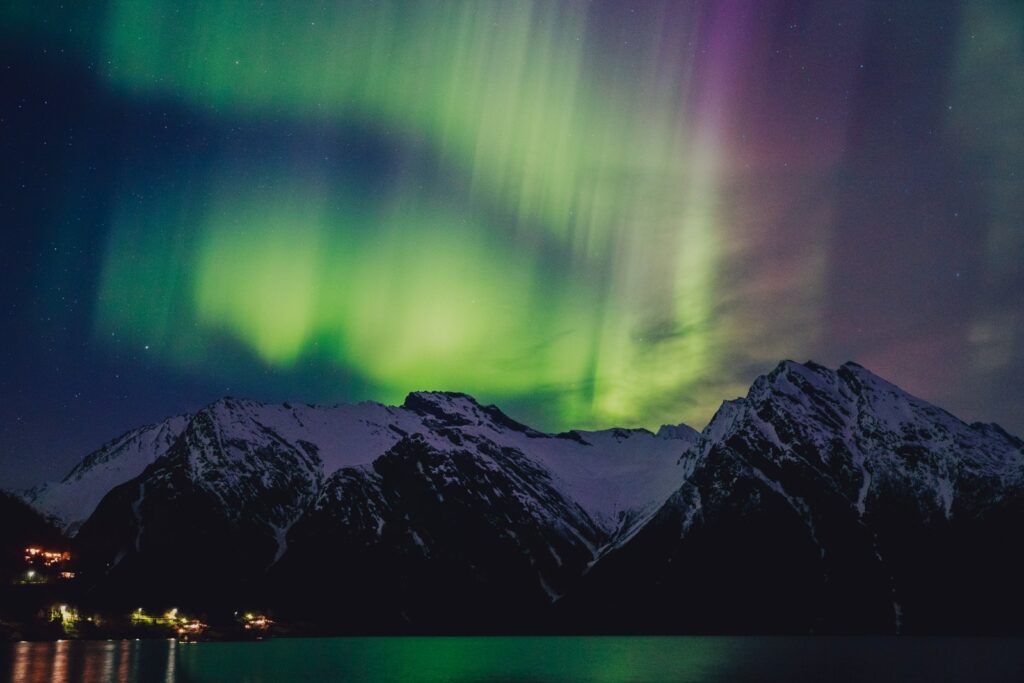
This overnight adventure took me sailing in the uninhabited islands deep in the South Pacific, whilst I was on a longer trip to Papua New Guinea. One sunny morning, I hauled myself aboard a Vaka, a beautiful traditional wooden Polynesian sailing vessel comprising of two sturdy double-hulled canoes and an incredibly lively crew from the Okeanos Foundation, where I was to spend two days and one precious starry night. The Okeanos Foundation is a remarkable organisation with a mission to empower Pacific Island people to implement traditionally based sustainable sea transportation, ensuring independence and cultural revival. These canoes are entirely green, operated by the wind, sun and powered by coconut oil. I shook hands with my skipper and exchanged enthusiastic smiles with the rest of the crew, busy tugging on ropes. I always jump at any opportunity to sail, but coming from South Dorset, these tend to be sailing for fish and chips on Cowes and racing back to Lymington by sun fall, or similarly exploring the Cornish coastline with friends in the rain.
“Stars are like road maps,” one of the crew members piped up, as I finished my final mouthful of traditional LapLap that evening, which was piled high with freshly caught fish we had caught earlier in the day. I leant back on the cushion behind my back and looked up towards the clear night’s sky. For the Pacific Island communities, the relationship with their environment is their livelihood. By using ancient methods and techniques, including navigating entirely by the stars, the crew’s ancestors have sailed these routes for many years, and they passed on this fascinating knowledge to me.

From Pete
Global Sales Director
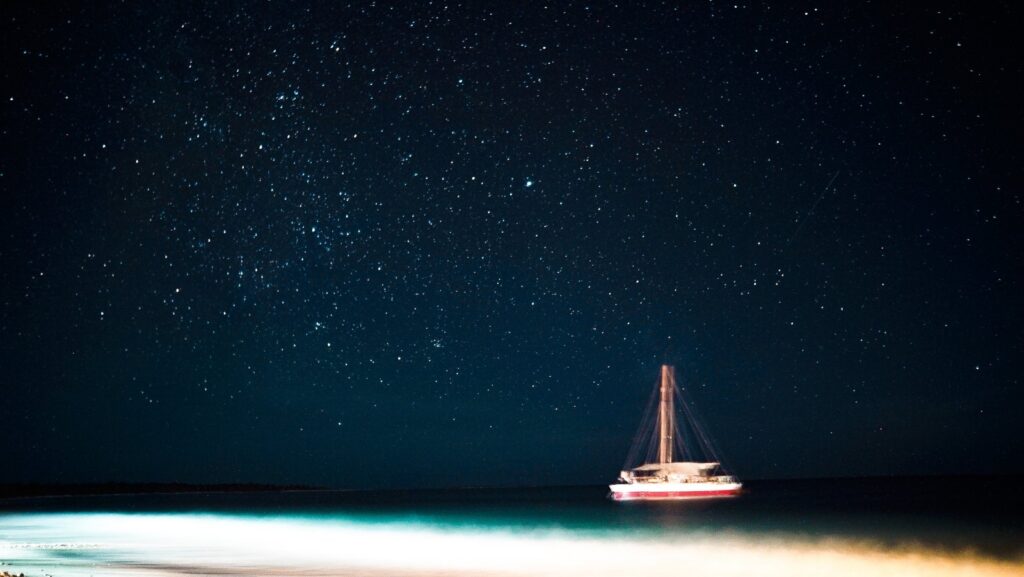
Through our South Pacific team’s special relationship with the Okeanos Foundation, we love to arrange private expeditions and charters for families and friends wishing to spend a few nights island hopping to seldom-visited islands and learning to sail by the stars from the crew of these beautiful Polynesian vessels – an authentic and rich astrological and anthropological experience. I am going to be putting this trip back on my bucket list, but definitely for longer next time!
I haven’t been to Alaska, the Mongolian Steppe or Australian Outback, and perhaps I’m biased after living there, but surely one of the very best stargazing destinations on earth has to be Botswana’s Makgadikgadi Salt Pans.
There’s not a cloud in the sky from May to October – guaranteed – and so little light pollution that stars literally sit along the horizon, completely filling the sky. If you lie on your back a couple of kilometres into the pans, it feels as though you’re inside a snow-globe of stars. The baked white salt beneath your body is still warm from the sun and its white surface gives off a tangible glow. Some have compared the experience to being in the middle of the ocean – it’s certainly surreal! Counting twenty-three shooting stars in sixty seconds was a personal record, though not uncommon. On one memorable evening, a meteor lit the night sky green; the light was bright enough to read from and burned for long enough that you could turn and stare gobsmacked before it disappeared over a distant horizon.
The Makgadikgadi may not have the same international clout of its famous neighbour to the north, the Okavango. However, there are few safari destinations offering such an immersive and varied experience. The enormous variety of the Kalahari is showcased in this harsh environment, visitors will experience incredible wildlife encounters and the world-famous Jack’s Camp offers the chance to stay in opulent old-school style. But it’s the time on the salt pans that captures the imagination and fuels the positive reports from our returning guests!

From Felix
Senior Africa Travel Designer
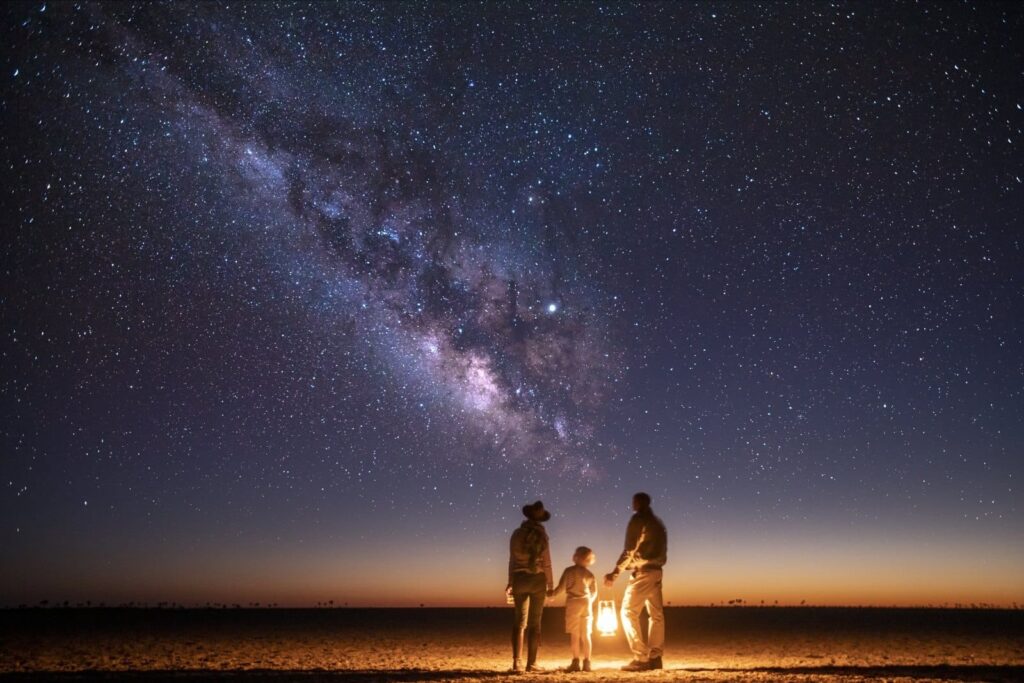
The Atacama Desert in northern Chile sits at high altitude, about 2,500 metres above sea level, and is the driest nonpolar desert on earth – which makes its night skies some of the clearest in the world. Atacama is one of the most beautiful places I’ve been; it’s both calming and exciting, and I will never forget the endless night sky. Several top-level observatories operate in this vast landscape of salt and sand, with almost no surrounding pollution, light or otherwise. Following in the footsteps of scientists, astro-tourism enthusiasts looking for the ultimate adventure have been drawn to the area in the past decade.
A number of informative tours cater to amateur explorers tracing constellations, clusters and galaxies. But seasoned stargazers can go a step further by visiting the revolutionary Alma observatory, the world’s largest astronomical project. Using antennae technology that equals a 10-mile-long telescope, Alma captures star and planet formulations billions of light-years away and uncovers detail with 10x the resolution of the Hubble telescope.
The terrestrial surroundings are no less otherworldly. Reach Alma on a drive past endless craters, crevasses, sand dunes and volcanoes tinted distinctly Martian red. In other parts of the desert, jagged, crystalised salt flats extend to the horizon and bright turquoise lagoons attract thousands of flamingos. One region of impossible sand mountains and rock formations is even named the Valley of the Moon. For such a remote location, Atacama is home to four beautiful, quiet lodges built from adobe, stone and wood that feature indigenous Andean Chilean design and textiles. My favourite has delicate sand patterns smoothed around fire pits for cocktails, and casitas with cavernous outdoor rainfall showers. They blend seamlessly into the shimmering pastel landscape of hot springs, geysers and long-dormant purple volcanoes, leaving the focus on the natural world and night sky.

From Evie
Senior Latin America Travel Designer
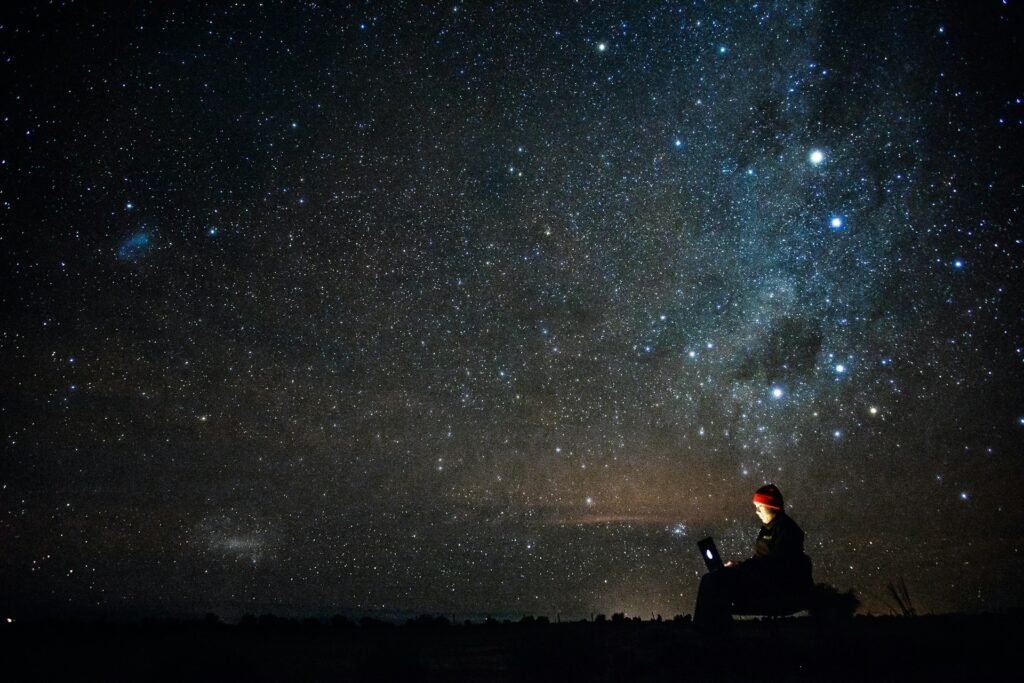
It’s a brief moment I’ll always remember – when I nipped back to the bedroom to fetch a jumper before dinner and caught a glimpse at the bright night’s sky. It was a New Moon this particular evening and, even with the naked eye, my eyes carried me far.
Gangtey Lodge is one of my absolute favourites. It is located in the heart of Bhutan’s isolated Phobjikha Valley, sheltered by the eastern Himalayas, with sweeping views right across the valley. In the mornings it is covered by a sea of mist, which is scorched off by the sun by midday, and by nightfall, the stars shine down and the black-necked cranes rest in the marshes from November to February.
The Bhutanese landscape has a way of making you feel incredibly peaceful and wholesome. When you spend your days on the slow journeys, winding your way up mountain passes, with picnics on river banks or marvelling at the architectural wonders of the monasteries, you certainly feel you have the time to gaze up at the stars each evening, with no urgency about getting to bed at any set time. After a cosy dinner inside with fire ablaze and warming your back, you can gaze up at the night’s sky through the telescope on Gangtey Lodge’s balcony and you can not fail to feel uplifted. I wrapped myself in a quilt with a generous nightcap of whisky, dozing contentedly on the balcony.

From Henry
Founder and Chairman
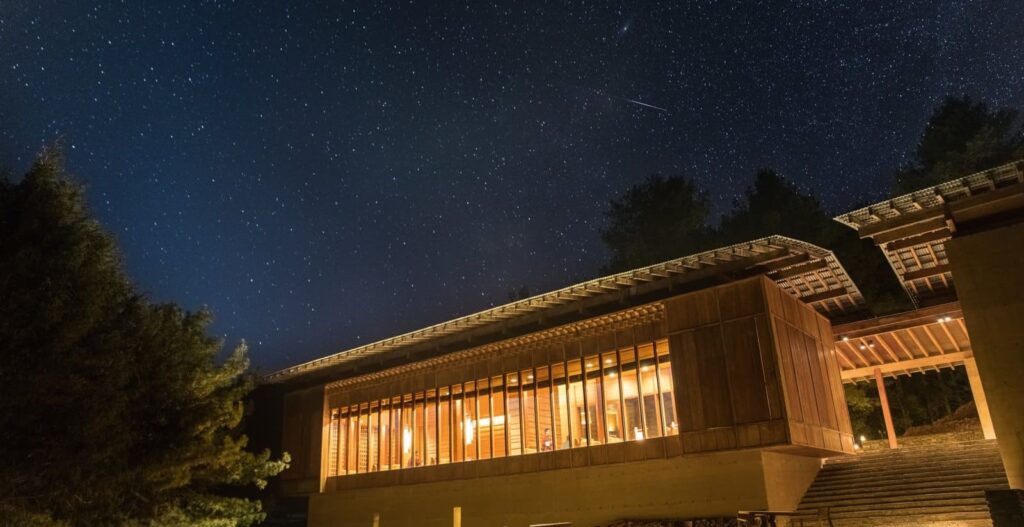

SIGN UP